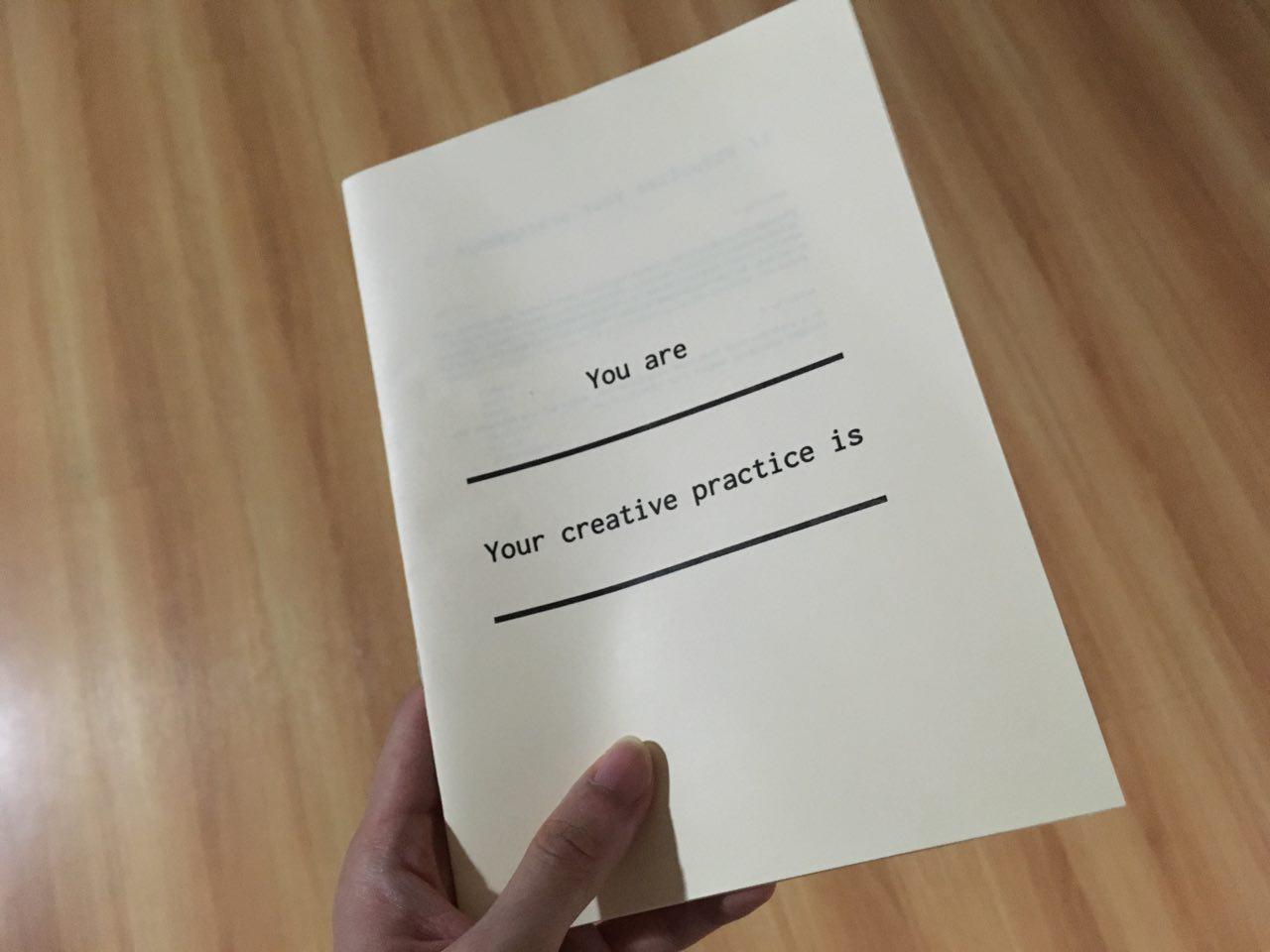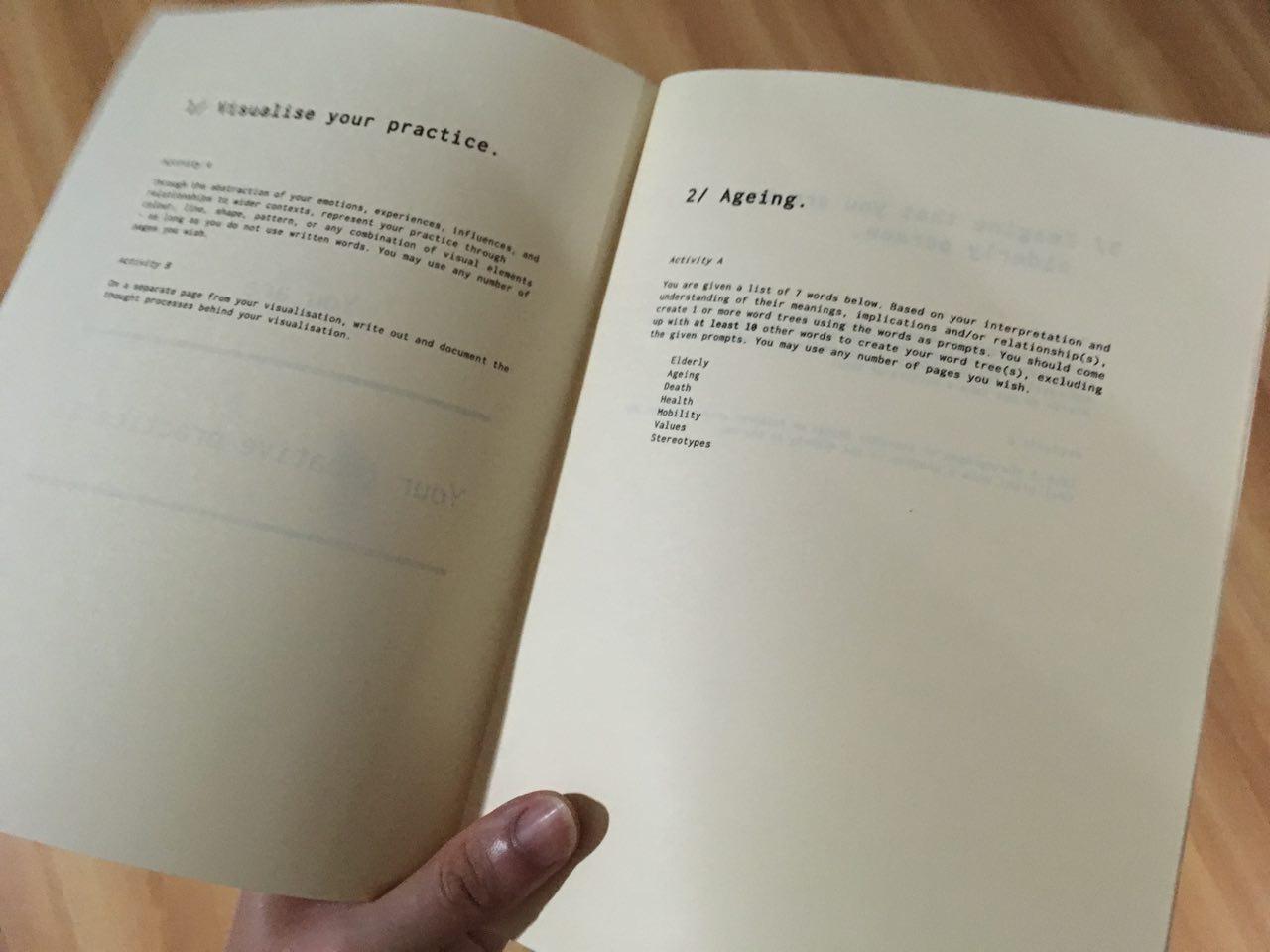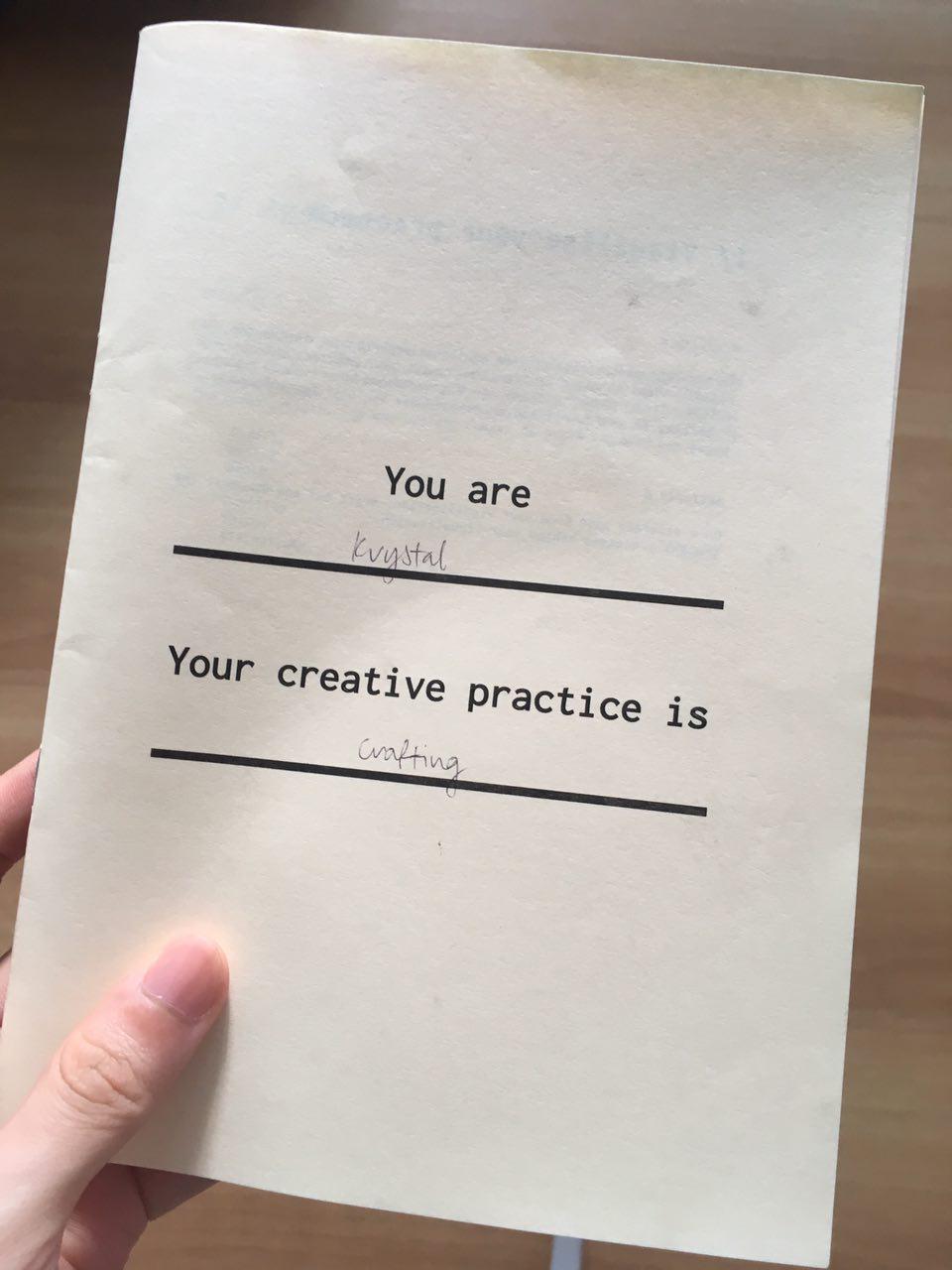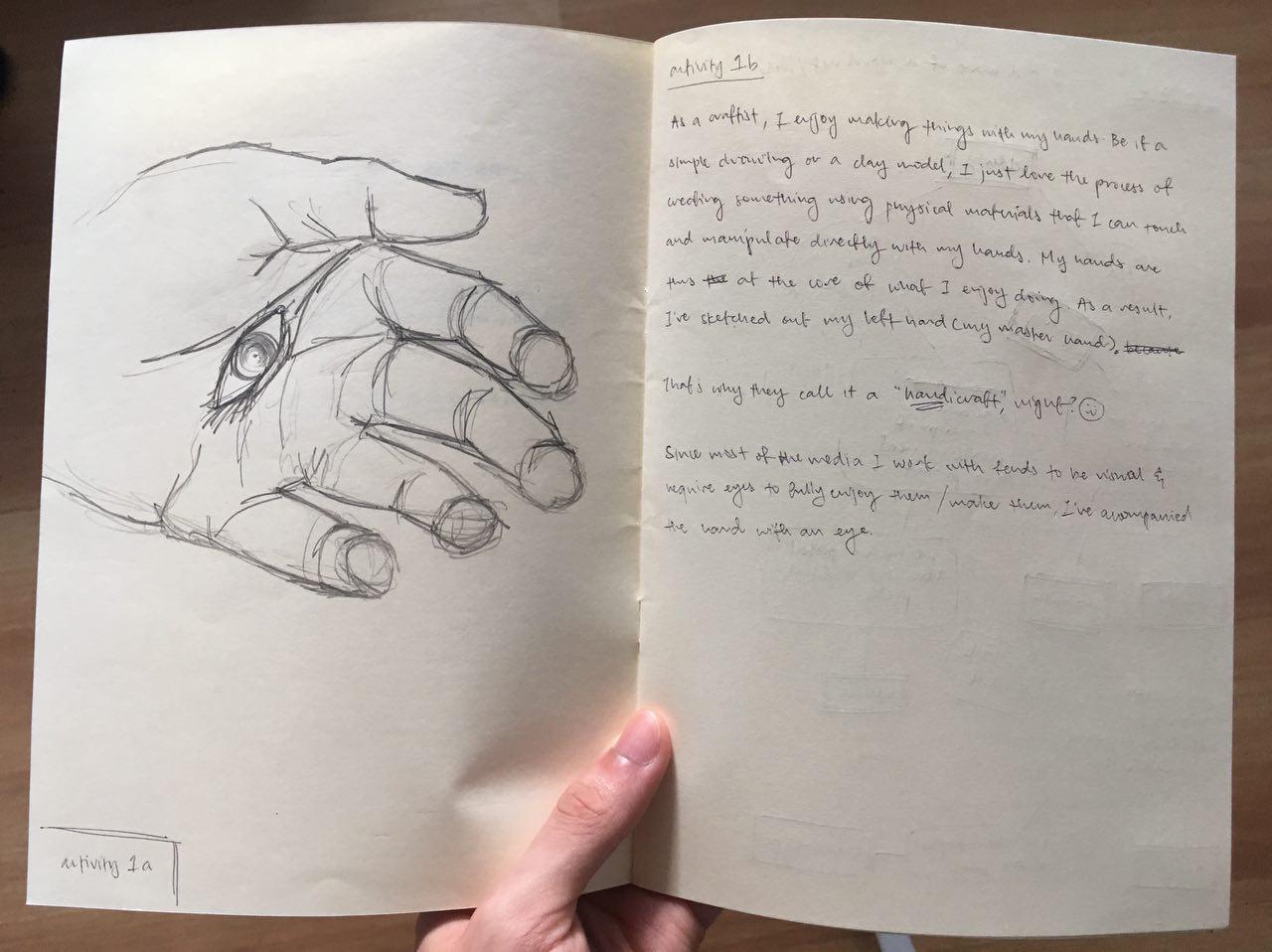With the art therapy practitioner we’d interacted with, our group decided to develop several prompts that were related to art-making and ideas related to the elderly.
Within our group, we each came up with an activity related to art-making and the elderly. These centred around abstract visualisation, word association, and photography.
Design Probe: Workbook with 3 activities, each self-recorded
- Goal: To investigate attitudes towards art therapy for the elderly as a creative practice and ageing from the perspectives of an art therapist and general populace
- Visualisation of practice
- Through the abstraction of your emotions, experiences, influences, and relationships to wider contexts, represent your practice through colour, line, shape, pattern, or any combination of visual elements – as long as you do not use written words. You may use any number of pages you wish.
- On a separate page from your visualisation, write out and document the thought processes behind your visualisation.
- Mental model of ageing and the elderly
- You are given a list of 7 words below. Based on your own interpretation and understanding of their meanings, implications and/or relationship(s), create one or more word trees using the words as prompts. You should come up with at least 10 other words to create your word tree(s), excluding the given prompts. You may use any number of pages you wish.
- Elderly
- Death
- Ageing
- Health
- Mobility
- Values
- Stereotypes
- You are given a list of 7 words below. Based on your own interpretation and understanding of their meanings, implications and/or relationship(s), create one or more word trees using the words as prompts. You should come up with at least 10 other words to create your word tree(s), excluding the given prompts. You may use any number of pages you wish.
- Imagine that you are an elderly person.
- Take 2 photographs of objects or elements around you that were integrated to accommodate the various needs of the elderly. (e.g. ramps and railings for the elderly who are unable to navigate up the stairs)
- Take 3 photographs of everyday things or features around you that you feel might pose a problem to the elderly in any way.
These activities were then compiled into a workbook form, which was provided to a practitioner.





